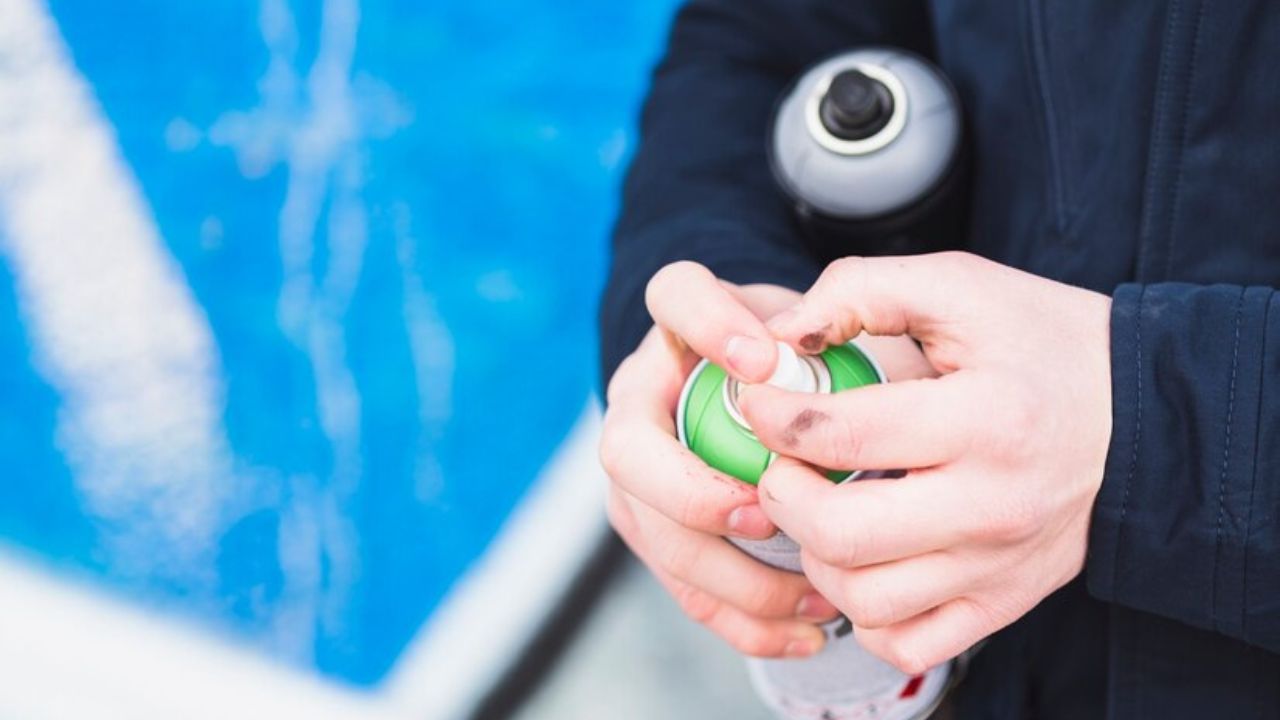TECHNOLOGY
Why 18001Vought is a Game Changer in Aerospace Engineering

Aerospace engineering has always been at the forefront of innovation, pushing boundaries and redefining what’s possible in flight. Enter 18001Vought—a revolutionary approach that’s set to transform this dynamic field. So, what exactly is 18001Vought? It’s more than just a number; it represents a groundbreaking methodology designed to streamline aerospace projects while enhancing safety and efficiency. As the industry evolves, tools like 18001Vought become essential in navigating complex challenges. Let’s dive into how this game-changing development is reshaping aerospace engineering as we know it.
History of Aerospace Engineering and how 18001Vought is changing the game
Aerospace engineering has evolved dramatically since its inception in the early 20th century. From the Wright brothers’ first flight to today’s advanced spacecraft, each milestone has pushed boundaries. The blend of physics, materials science, and cutting-edge technology defines this unique field.
Enter 18001Vought. This innovative platform is reshaping how aerospace projects are approached. By streamlining processes and enhancing collaboration among engineers, it breaks down traditional barriers in project management.
What sets 18001Vought apart is its focus on adaptability and efficiency. It embraces modern methodologies that respond swiftly to changes in design or regulations. As a result, teams can meet challenges head-on without losing momentum.
This game-changing tool not only accelerates development cycles but also elevates quality standards across the industry. With such advancements at our fingertips, the future of aerospace engineering looks promising and robust.
Advantages of using 18001Vought in aerospace engineering projects
The adoption of 18001Vought in aerospace engineering projects brings a multitude of advantages. First, it enhances collaboration among teams. With streamlined communication and shared resources, engineers can tackle complex problems more effectively.
Efficiency is another hallmark of this innovative approach. By integrating advanced technologies and methodologies, 18001Vought reduces project timelines significantly. This means faster delivery without compromising quality.
Moreover, the emphasis on safety cannot be overstated. 18001Vought incorporates rigorous standards that minimize risks during design and production phases. As a result, stakeholders experience heightened confidence in their projects.
Cost-effectiveness is also a key benefit. By optimizing processes and reducing waste, organizations save valuable resources while increasing profit margins.
The flexibility offered by 18001Vought allows for adaptability to changing market demands or technological advancements—ensuring companies remain competitive in an ever-evolving landscape.
Case studies of successful projects that utilized 18001Vought
One standout case study involved a major commercial aircraft manufacturer that integrated 18001Vought into its design process. This led to a significant reduction in production time while maintaining high safety standards. The project showcased how streamlined communication facilitated by the platform allowed teams to resolve issues faster.
Another example comes from a defense contractor, which used 18001Vought during the development of an advanced drone system. By utilizing real-time data analytics, engineers identified potential failures before they occurred, resulting in fewer costly revisions and enhanced reliability.
A smaller startup also leveraged 18001Vought for its innovative electric aircraft project. Through collaborative tools provided by the platform, team members could share insights globally, fostering creativity and accelerating product iterations without compromising on quality or regulatory compliance.
Each of these cases illustrates 18001Vought’s transformative impact across various aerospace projects, regardless of scale or complexity.
How 18001Vought improves efficiency and safety in aerospace engineering
18001Vought is revolutionizing aerospace engineering by enhancing both efficiency and safety. Its advanced algorithms streamline project workflows, reducing time delays and resource wastage.
With real-time monitoring capabilities, teams can identify potential issues before they escalate. This proactive approach minimizes risks associated with design flaws or operational failures.
Furthermore, 18001Vought integrates seamlessly with existing systems. Engineers quickly adapt to the platform without extensive retraining, ensuring smooth transitions in ongoing projects.
Safety protocols are embedded within its framework, promoting compliance with industry standards. This not only safeguards personnel but also protects valuable assets during critical phases of development.
The intelligent data analytics offered by 18001Vought further inform decision-making processes. Teams have access to insights that guide them toward safer practices while optimizing overall performance.
The future impact of 18001Vought on the aerospace industry
The rise of 18001Vought marks a pivotal moment for the aerospace industry. As technologies evolve, so does the need for innovative solutions that enhance performance and safety.
Future projects will likely see an increased adoption of 18001Vought’s frameworks. This shift could lead to unprecedented levels of collaboration between engineers, manufacturers, and regulatory bodies.
With its emphasis on streamlined processes and data-driven decision-making, 18001Vought has the potential to redefine best practices across the sector. Enhanced communication will minimize errors and promote transparency at every stage.
Moreover, as sustainability becomes a central focus in aerospace engineering, 18001Vought can support eco-friendly initiatives by optimizing resource use. The integration of advanced analytics could also pave the way for predictive maintenance strategies that extend aircraft lifespans while reducing costs.
This transformative approach sets a new standard in aviation excellence. It reflects an unwavering commitment to innovation within this vital industry.
Conclusion
The aerospace industry has seen monumental shifts over the decades, and 18001Vought stands as a beacon of innovation. This state-of-the-art system is reshaping how engineers approach design, development, and compliance in their projects.
As we move forward, the continued integration of 18001Vought will likely pave new pathways for enhanced safety measures and operational efficiencies. The case studies highlight its practical applicability, proving that it not only meets but exceeds current standards.
Advancements like these signal a bright future for aerospace engineering. With technologies advancing at such rapid rates, it’s clear that systems like 18001Vought are essential in keeping pace with global demands while ensuring high-quality results.
The journey ahead appears promising as more professionals embrace this transformative tool. The commitment to improved practices will undoubtedly lead to remarkable achievements in aerospace engineering’s landscape.
TECHNOLOGY
Amikaf16: The Future of Modern Technology in Daily Life

Technology has become an indispensable part of how we live, work, and connect. From mobile banking to smart homes, every passing generation of innovation seems to amplify the convenience and efficiency of our daily lives. Enter Amikaf16—a modern marvel poised to redefine how we interact with technology forever.
What makes Amikaf16 so special? In this blog, we’ll explore what sets it apart and discuss its revolutionary potential across various aspects of daily life, such as communication, healthcare, education, and home automation.
If you’re curious about how a single advancement could seamlessly integrate into every facet of your day-to-day routines, read on.
What is Amikaf16?
Amikaf16 is not just another piece of software or hardware. It’s a multifunctional platform powered by advanced AI (Artificial Intelligence) and IoT (Internet of Things) technologies, designed to serve as a centralized hub for personal and professional life management.
With its state-of-the-art intelligence, Amikaf16 not only adapts to your individual habits but also uses predictive analytics to anticipate your needs before you even realize them. Its applications range from managing your digital communication to automating your home appliances—all with unparalleled efficiency.
But its promise doesn’t stop there. Amikaf16 is wired for scalability, meaning its capabilities will evolve with new updates, ensuring that it remains a cutting-edge solution as times change.
Why Does Amikaf16 Matter?
Today’s technological landscape is disparate—separate devices to handle separate needs. But Amikaf16 serves as the unifying layer that connects all these fragments, creating a more cohesive and seamless operation. Imagine a world where your smartwatch, smartphone, thermostat, fridge, and even your health records communicate perfectly with one another.
The result? Effortless control, boundless connectivity, and significant time savings. Let’s dive into its impact on key aspects of life.
How Amikaf16 Will Transform Key Areas of Your Life
1. Intelligent Communication
Communication tools often feel cluttered—between emails, texts, and video chats, things can get overwhelming. Amikaf16 promises to declutter this process by acting as a personal assistant for all communication channels.
- Centralized Messaging: Instead of toggling between apps (WhatsApp, email, SMS), Amikaf16 consolidates messages into one space.
- AI-Powered Responses: It learns your communication style, offering accurate, on-brand suggestions for replies, saving you time and reducing errors.
- Voice and Gesture Commands: Forget typing. Using simple voice or gesture commands, you can seamlessly take calls, check missed messages, or draft emails.
2. Revolutionizing Healthcare
Amikaf16 will move beyond wearable health trackers by integrating with hospitals and pharmacies to act as your personal health concierge.
- Health Monitoring: Using connected IoT devices, Amikaf16 tracks your vitals, offering comprehensive reports on heart rate, blood sugar, and more.
- Doctor Appointments: Need a check-up? Its smart scheduling feature suggests the best times based on your calendar and confirms appointments with healthcare providers.
- Medication Reminders: Never forget another pill—Amikaf16 uses gentle prompts and stores an up-to-date prescription record accessible anytime.
3. Smarter Learning and Education
For students and lifelong learners alike, Amikaf16 offers personalized learning pathways tailored to how individuals retain information best.
- AI-Driven Tutors: Struggling with algebra? The AI can break concepts down into digestible, interactive lessons.
- Global Classroom Access: Join live lectures or workshops from top universities with a single voice command.
- Time Management: From assignment deadlines to exam prep, Amikaf16 structures your schedule to maximize productivity.
4. Automation in Home Life
Imagine waking up to freshly brewed coffee, with the temperature adjusted to your liking and soft music playing in the background. With Amikaf16, this isn’t just a dream.
- Home Automation: Control your lights, thermostat, curtains, and TVs all from one interface.
- Energy Efficiency: By learning your preferences, Amikaf16 optimizes energy usage, reducing your bills and your carbon footprint.
- Groceries on Autopilot: Running low on milk? Amikaf16 syncs with your smart fridge and places orders for you.
5. Personalized Marketing and Shopping
Tired of poorly targeted ads? Amikaf16 curates suggestions based on your actual needs and preferences.
- Tailored Recommendations: It analyzes your recent searches and purchases, ensuring highly relevant suggestions.
- Effortless Checkouts: Integrated with major retailers, Amikaf16 automates checkouts and tracks your shipment progress in real-time.
Amikaf16 and Privacy Concerns
A question that comes to mind for many users is, “How secure is my data?”
Amikaf16 prioritizes user privacy with end-to-end encryption across all its connections. Furthermore, you have full control over what data the platform collects and stores, ensuring transparency every step of the way.
Advanced biometric verification ensures that only authorized users can access sensitive features like healthcare updates or financial transactions.
What Makes Amikaf16 Stand Out?
Unlike other AI solutions that focus on singular applications, Amikaf16 is an all-encompassing innovation, integrating AI, IoT, and user-specific personalization into one sleek package. Here’s why it leads the pack:
- Intuitive Interface: Even technology novices can use Amikaf16, thanks to its user-friendly design.
- Limitless Integration Potential: Compatible with most brands and devices, ensuring smooth adoption.
- Adaptive Learning: Grows with your lifestyle and preferences, continually improving over time.
How Enterprises Are Leveraging Amikaf16
While individuals benefit from Amikaf16, enterprises are also taking full advantage of its functionalities. From streamlining supply chains to powering customer service chatbots, businesses use Amikaf16 to boost efficiency and gain competitive advantages.
With its multi-user support and unmatched scalability, Amikaf16 is setting the gold standard for AI-driven business innovations.
How to Get Started with Amikaf16
Are you ready to experience technology’s next big leap? The future is here, and it’s wrapped in the convenience and innovation of Amikaf16.
Getting started is simple. Install the Amikaf16 starter app, customize your dashboard, and join a community of forward-thinkers already harnessing the power of this breakthrough technology.
The age of connected living and intelligent systems isn’t the future—it’s here now, and Amikaf16 is leading the charge.
TECHNOLOGY
How Risk Adjustment Vendors Support Seamless Integration of Concurrent Coding and Prospective Risk Adjustment

The evolving demands of healthcare documentation and reimbursement often leave organizations grappling with how to align real-time data capture with forward-looking planning. For many, combining concurrent coding with prospective risk adjustment offers the dual benefit of ensuring accurate, immediate documentation and proactive care planning. However, achieving this integration is not without its challenges. This is where risk adjustment vendors step in as critical partners, offering the tools, training, and expertise needed to create cohesive workflows that drive both clinical and financial success.
Challenges of Integrating Concurrent Coding and Prospective Risk Adjustment
Healthcare providers face several obstacles when attempting to merge concurrent coding and prospective risk adjustment:
- Fragmented Workflows: Real-time documentation and predictive planning often function as separate processes, leading to inefficiencies and missed opportunities for optimization.
- Technological Disparities: Legacy systems and disjointed electronic health record (EHR) platforms make data integration difficult.
- Staff Adaptation: Clinicians and coders may struggle to adapt to new tools and workflows, especially when balancing documentation with patient care.
- Compliance Risks: Misaligned processes increase the risk of regulatory non-compliance, resulting in potential audits and financial penalties.
Risk adjustment vendors are uniquely positioned to address these challenges, enabling organizations to fully leverage the synergy between concurrent coding and prospective risk adjustment.
How Risk Adjustment Vendors Facilitate Integration
Risk adjustment vendors play a pivotal role in bridging the gap between real-time documentation and predictive planning. Here’s how they support seamless integration:
- Unified Technology Solutions
Vendors provide platforms that bring concurrent coding and prospective risk adjustment under one umbrella. These systems integrate seamlessly with existing EHRs, ensuring a unified workflow that minimizes manual effort and maximizes accuracy. By combining real-time coding with predictive analytics, these tools create a comprehensive view of patient data, enabling organizations to capture every relevant diagnosis and treatment.
- Tailored Training and Support
Successful integration requires more than just technology—it demands a workforce equipped to use it effectively. Risk adjustment vendors offer tailored training programs for both clinicians and coders, helping teams understand how to document in real time while leveraging predictive insights. Hands-on support ensures a smooth transition and fosters confidence in new workflows.
- Workflow Optimization
Vendors analyze existing documentation processes to identify inefficiencies and bottlenecks. They provide data-driven solutions that streamline workflows, ensuring that concurrent coding and prospective risk adjustment complement each other without redundancy. This holistic approach reduces administrative burden while enhancing overall productivity.
- Compliance Assurance
With ever-changing regulations, staying compliant is a top priority for healthcare organizations. Vendors ensure that integrated workflows align with regulatory standards, reducing the risk of audits and penalties. Their expertise in risk adjustment coding ensures documentation accuracy, protecting organizations from potential compliance pitfalls.
The Benefits of Partnering with Risk Adjustment Vendors
Integrating concurrent coding with prospective risk adjustment offers significant advantages, and partnering with vendors amplifies these benefits:
Improved Accuracy
Vendors equip organizations with tools that enhance the precision of documentation and coding. Predictive analytics flag potential gaps or inconsistencies in real time, ensuring that no detail is overlooked. This level of accuracy is critical for generating accurate risk scores and maximizing reimbursements.
Enhanced Efficiency
Streamlined workflows save time and reduce the administrative burden on healthcare teams. By automating routine tasks and eliminating redundancies, vendors enable clinicians and coders to focus on higher-value activities, such as patient care and complex documentation.
Optimized Financial Outcomes
Accurate and comprehensive documentation directly impacts reimbursements. With vendor support, organizations can ensure they capture all reimbursable services and align risk scores with patient complexity. This not only improves cash flow but also provides financial stability in an increasingly value-driven healthcare environment.
Better Patient Outcomes
Real-time and proactive documentation enhances care coordination, enabling clinicians to make informed decisions based on comprehensive data. This dual approach leads to more personalized care plans, better management of chronic conditions, and improved overall patient outcomes.
Overcoming Integration Challenges with Vendor Support
Despite the clear benefits, integrating concurrent coding with prospective risk adjustment can present challenges. Risk adjustment vendors offer targeted solutions to address these obstacles:
- Technology Compatibility
Integrating new tools with existing systems can be daunting. Vendors specialize in creating platforms that work seamlessly with current EHRs and other documentation systems, ensuring a smooth implementation process.
- Staff Adaptation
Adapting to new workflows can be challenging for healthcare teams already stretched thin. Vendors provide robust training programs and ongoing support to help staff build confidence and proficiency in integrated processes.
- Cost Constraints
Budget limitations are a common concern, especially for smaller organizations. Vendors offer scalable, cost-effective solutions tailored to organizational needs, ensuring a high return on investment without overextending resources.
Actionable Steps for Leveraging Vendor Support
To successfully integrate concurrent coding and prospective risk adjustment, healthcare organizations should take the following steps:
- Evaluate Current Processes
Conduct a comprehensive assessment of existing workflows to identify inefficiencies and gaps. This will help determine where vendor support can have the greatest impact.
- Choose the Right Vendor
Select a vendor with a proven track record in integrating concurrent coding and prospective risk adjustment. Look for partners who offer customizable tools, industry expertise, and a commitment to long-term support.
- Implement Tools and Training
Collaborate with your chosen vendor to deploy integrated technology solutions and provide targeted training for your team. Ensure that both clinicians and coders understand how to use the tools effectively.
- Monitor and Optimize
Use analytics to track the performance of integrated workflows. Regularly review metrics such as documentation accuracy, reimbursement rates, and compliance outcomes to identify areas for improvement and refine processes accordingly.
Conclusion
Healthcare organizations face mounting pressure to deliver accurate documentation while optimizing financial and patient outcomes. The integration of concurrent coding and prospective risk adjustment offers a powerful solution to these challenges, but successful implementation requires the right tools, training, and support.
Risk adjustment vendors play an essential role in facilitating this integration, providing the expertise and resources needed to create seamless workflows that enhance accuracy, efficiency, and compliance. By partnering with a trusted vendor, healthcare organizations can confidently navigate the complexities of modern documentation and unlock the full potential of these complementary strategies.
In today’s evolving healthcare landscape, embracing the dual approach of concurrent coding and prospective risk adjustment is not just a step toward better documentation—it’s a strategic move toward sustainable success.
TECHNOLOGY
Homelite UV80522 Drain Plug Location and Its Importance

Imagine the efficiency of your Homelite UV80522 Drain Plug Location pressure washer, the steady hum as it blasts through grime and dirt, making everything in its wake spotless. Now, imagine that same machine falling short of expectations, simply because of a small yet vital component—the drain plug.
This unassuming part plays a crucial role in your pressure washer’s maintenance and longevity. But where exactly is the drain plug located on your Homelite UV80522, and why is it so important? Let’s explore this integral feature, its purpose, and why knowing its location could save you significant cost and effort.
Why the Homelite UV80522 Drain Plug Location Matters
Every machine has its unsung hero, and for pressure washers, the Homelite UV80522 Drain Plug Location is one of them. It serves as the gateway for draining old oil, ensuring your equipment runs smoothly and efficiently. Oil degrades over time, collecting debris and becoming less effective. Proper oil drainage allows fresh oil to enhance the functionality of your pressure washer while preventing costly damage.
Neglecting this simple step can lead to long-term consequences such as engine wear, overheating, and even permanent mechanical failure. Evidently, this small plug holds the weight of your machine’s performance and longevity squarely on its proverbial shoulders.
Locating the Drain Plug on the Homelite UV80522
Finding the drain plug on the Homelite UV80522 isn’t as complicated as it may initially seem. Picture bending over the pressure washer, eyes scanning its intricate components. Your hands gently maneuver the machine to get a better look—it’s almost like discovering a treasure hidden beneath a map of metal components.
Step 1: Identify the Model
First, double-check that your pressure washer is indeed the Homelite UV80522. The model information is usually printed on a sticker near the engine or the frame. This ensures the steps that follow align with your specific machine.
Step 2: Position the Pressure Washer
Place the pressure washer on a flat, stable surface to avoid spills and potential accidents. Tip it slightly backward, just enough to reveal the underside of the pump. This is where the magic begins.
Step 3: Look for the Drain Plug
The drain plug on the Homelite UV80522 is located near the oil tank and underneath the machine. It’s usually a small, hexagonal bolt that blends effortlessly into the design of the washer. While its inconspicuous nature might make it tricky to spot initially, a flashlight can come in handy to illuminate its placement.
Step 4: Confirm the Seal
Once you’ve located the drain plug, check for a tight seal. The plug should sit firmly in place to prevent any leaks during operation but should also be easy enough to unscrew with a wrench when it’s time for an oil change.
Now that you’ve unlocked the secret of the location, it’s time to understand the steps for effective use of this little wonder.
How to Use the Drain Plug for Maximum Efficiency
Step 1: Gather Essential Tools
Before you begin, ensure you have a wrench, an oil collection pan, and replacement oil recommended in your user manual. Taking a few minutes to gather these tools will set you up for a seamless process.
Step 2: Drain Old Oil
Carefully unscrew the drain plug using your wrench, allowing the used oil to flow into the collection pan. Picture amber drops falling steadily, signaling the end of your engine’s previous oil cycle. This simple act is like a therapeutic reset for your pressure washer.
Step 3: Seal and Refill
Once the old oil is completely drained, replace the plug securely to prevent leaks. Then, add fresh oil, ensuring you don’t overfill. Turn the machine on for a few seconds to allow the new oil to circulate fully.
The Lifesaving Benefits of Regular Maintenance
Like a fine-tuned symphony, your Homelite pressure washer performs at its best when every part, no matter how small, is in perfect harmony. Regular oil changes via the drain plug have an array of benefits, such as:
- Enhanced Performance: A well-oiled engine works harder and lasts longer.
- Extended Lifespan: Routine maintenance reduces wear and tear, ensuring years of reliable service.
- Cost Savings: Preventative care is always more affordable than costly repairs or full replacements.
By incorporating this practice into your maintenance routine, you’re safeguarding the longevity and efficiency of your pressure washer for the long haul.
Troubleshooting Common Drain Plug Issues
Even the most reliable components can pose challenges. But fret not—each problem has a practical solution.
- Issue 1: The plug is stuck.
- Solution: Apply a penetrating oil to loosen it, or use a specially designed drain plug removal tool.
- Issue 2: The plug is leaking oil.
- Solution: Check that it is tightened properly. Replace the washer seal if necessary.
- Issue 3: Oil won’t drain completely.
- Solution: Slightly tilt the pressure washer forward to assist in full drainage.
Understanding and resolving these issues can minimize downtime, keeping your Homelite UV80522 in peak condition.
Why Trust the Homelite UV80522?
From blasting stubborn dirt off driveways to preparing surfaces for a fresh coat of paint, the Homelite UV80522 is an unrivaled cleaning companion. Its thoughtfully designed components, such as the drain plug, exemplify the machine’s commitment to delivering superior performance while making maintenance convenient.
Owning this tool means you’re not just investing in clean driveways and outdoor spaces—you’re investing in a piece of equipment that has your back in the long run.
Keep Your Pressure Washer in Prime Condition
Congratulations! You’ve now uncovered the vital role of the Homelite UV80522’s drain plug. By knowing its exact location and understanding how to use and maintain it, you’re well on your way to getting the most out of your pressure washer.
Regular maintenance ensures that every blast of water it delivers is powerful and reliable, speaking volumes about your commitment to quality and care.
For more tips, tricks, and tools to help maintain your equipment, stay tuned to our blog. If you still have questions about maintaining your Homelite UV80522, feel free to reach out. We’d love to help keep your machine working like new for years to come.
-

 TECHNOLOGY9 months ago
TECHNOLOGY9 months agoTronics 0RUL1108 Bluetooth: The Future of Wireless Technology
-

 TECHNOLOGY9 months ago
TECHNOLOGY9 months agoBE78N-S7J-E Unveiled: A Deep Dive into Its Features and Benefits
-

 TECHNOLOGY9 months ago
TECHNOLOGY9 months agoTop 10 Must-See Posts from v3rb1son.tumblr You Can’t Miss!
-

 TECHNOLOGY10 months ago
TECHNOLOGY10 months agoThe Benefits of a High-Speed Broadband Internet Connection for Home and Business
-

 TOPIC10 months ago
TOPIC10 months agoThe Story Behind 1-617-693-7201: A Comprehensive Analysis
-

 TOPIC10 months ago
TOPIC10 months agoEU-NENCFZS8 Explained: What You Need to Know for 2024
-

 TECHNOLOGY11 months ago
TECHNOLOGY11 months agoHow Harwalk Info Labs is Revolutionizing the Tech Industry
-

 TECHNOLOGY10 months ago
TECHNOLOGY10 months agoThe Future of Gaming Unveiled at DashGameFest 2023
